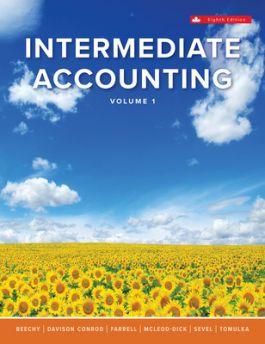




2 Assume a company is considering buying 10,000 units of a component part rather than making them. A supplier has agreed to sell the company 10,000 units for a price of $40.00 per unit. The company's accounting system reports the following costs of making the part: 2:03 Per Unit $19 12 Direct materials Direct labor Variable manufacturing overhead Fixed manufacturing overhead, traceable Fixed manufacturing overhead, allocated 10,000 Units per Year $190,000 120,000 20,000 80,000 40,000 $450,000 2 8 4 Total cost $45 One-half of the traceable fixed manufacturing overhead relates to supervisory salaries and the remainder relates to depreciation of equipment with no salvage value. If the company chooses to buy this component part from a supplier, then the supervisor who oversees its production would be discharged. What is the financial advantage (disadvantage) of buying 10,000 units from the supplier? Assume that a company makes 30,000 units of Part A each year. At this level of production, the company's accounting system reports the following cost per unit: $16 10 Direct materials Direct labor Variable manufacturing overhead Fixed manufacturing overhead 4 4 8 Total cost per unit $38 An outside supplier has offered to sell the company 30,000 parts per year for a price of $33 per part. The company believes that $156,200 of the fixed manufacturing overhead cost being allocated to this part will continue to be incurred even if the part is purchased from the outside supplier. What is the financial advantage (disadvantage) of buying the parts from the outside supplier? . Assume that a company makes three products-Product A, Product B, and Product C-and provides the following information with respect to those products: Product C Product A $70 Product B $75 $85 *:11 16 28 Selling price Variable costs per unit: Direct materials Direct labor Variable overhead Total variable cost per unit 24 32 40 24 2 3 3 58 59 55 Contribution margin per unit $ 12 $16 $30 The company incurs total fixed costs of $50,000. The maximum demand for each of its products is 600 units. It pays a direct labor wage rate of $16 per hour. The company has only 3,000 direct labor-hours available for production. Assuming the company has made optimal use of its 3,000 direct labor-hours, what is the maximum hourly rate the company should be willing to pay for additional labor-hours of capacity? 23 Assume that each year a company normally produces and sells 80,000 units of its only product for $40 per unit. The company's average unit costs at this level of activity are given below: 01:26:39 Direct materials Direct labor Variable manufacturing overhead Fixed manufacturing overhead Variable selling expenses Fixed selling expenses $ 9.50 10.00 2.80 5.00 1.70 4.50 eBook $33.50 Total cost per unit The company's relevant range of production is 70,000 - 100,000 units. It has an opportunity to sell 20,000 more units to new overseas customer. The import duties and foreign permits associated with the order would cost $16,000. However, the only selling cost associated with the order would be $1.50 per unit. What is the minimum price that the company could charge on this order and still break even with respect to this opportunity? 24 Assume that a company manufactures numerous component parts, one of which is called Part A. The company makes 50,000 units of Part A per year and its absorption costing system indicates that at this volume of production, it costs $23.00 per unit to make this part: 2. 01:26:04 Direct materials Direct labor Variable overhead Fixed overhead $10.00 6.00 2.00 5.00 eBook Total absorption cost per unit $23.00 The company is trying to decide between two alternatives: Alternative 1: Continue making 50,000 units of Part A annually using its existing equipment at the unit cost shown above. The equipment used to make this part does not wear out through use and it has no resale value. Alternative 2: Purchase 50,000 units of Part A from a supplier at a cost of $18.96 per unit. If the company chooses alternative 2, it believes that $180,000 of the fixed manufacturing overhead cost being allocated to Part A will continue to be incurred. What is the financial advantage or (disadvantage) of buying the parts from a supplier











